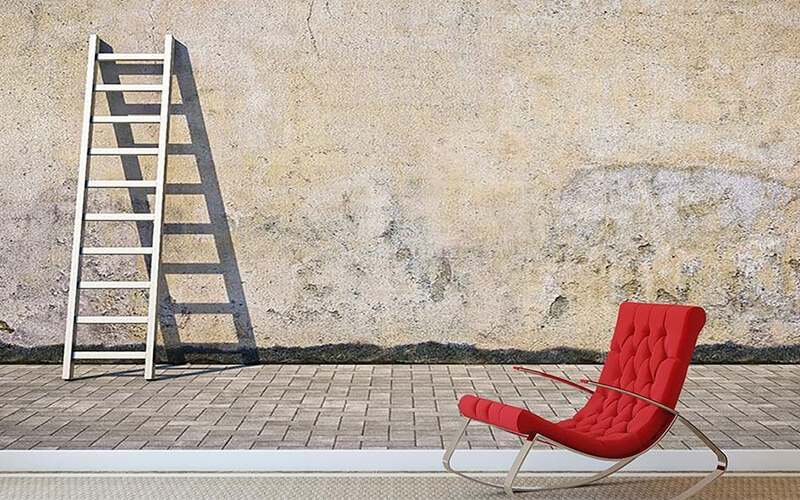Saraylı Madeni Eşya



STAIR USER MANUAL
Prior to;
a) Make sure you are in a position to use a ladder. Certain medical conditions or medication, alcohol or drug intake prevents the safe use of the ladder,
b) Ladders should be placed in an appropriate way to prevent damage if they are carried on the belt or in a truck,
c) Check the condition and operation of all parts of the ladder after shipment and before use for the first time,
d) Check that the ladder is not damaged and can use it safely at the beginning of each working day,
e) Regular periodic inspections are required for professional users,
f) Make sure that the ladder is suitable for the work to be done,
g) Do not use damaged stairs,
h) Clean any undesired paint, mud, oil or snow on the ladder,
i) Before using the ladder, a risk assessment should be carried out according to the legislation of the country of use at the workplace.
Installation and installation of stairs
a) The ladder should be installed in the correct position. For example, for a ladder with a ladder, this is to be installed at the right angle (slope angle of about 1: 4) at the level of the treads or serrated surfaces, and fully opened on the folded ladder.
b) Locking devices, if any, must be fully secured before use,
c) Stairs should be on flat, uneven and stationary ground,
d) The ladder shall be on a flat unbreakable surface and be fastened before use, for example, or fixed using a suitable device,
e) Ladders should never be changed from above,
f) During positioning, the risk of collision with the ladder (eg pedestrians, vehicles, doors) must be taken into account. Doors and windows (without a fire exit) and windows that are likely to be in the work area should be fixed,
g) Electrical risks in the work area (such as overhead lines or other exposed electrical equipment) should be identified,
h) Stairs should not stand on the steps or fingers, but on their own feet,
i) Stairs should not be placed on slippery surfaces (such as ice, shiny surfaces, or heavily soiled solid surfaces) unless additional effective measures are taken to prevent the staircase from slipping or if dirty surfaces are sufficiently cleaned.
Use of stairs
a) The maximum total load of the ladder type shall not be exceeded,
b) Do not hang from the ladder, the user should keep the buckle of the strap in the side beams and put both feet on the same step / finger,
c) Do not walk from a lean ladder to a higher place without additional fixing (such as fastening or a suitable fixing device),
d) Folded ladders should be used for passage to different height places,
e) The three steps / fingers of a leaning ladder should not be emphasized,
f) Do not stand on the top two steps of a folded ladder unless there is a platform or handrail,
g) The four steps / fingers on the top of the leaning ladder should not be rested on the upward section;
h) Ladders should only be used for short term light work,
i) Non-conductive ladders should be used for electrical works where voltage cannot be prevented,
j) Stairs should not be used in adverse weather conditions (such as strong storms),
k) Precautions should be taken to prevent children from playing on the stairs,
l) Doors (except fire doors) and windows within the working area must be fixed,
m) Turn your face towards the ladder when climbing up or down the ladder,
n) Hold the ladder firmly when climbing up or down the ladder,
o) Stairs should not be used as a bridge,
p) Wear suitable shoes when climbing the ladder,
q) Avoid lateral overloads (eg drilling of brick or concrete);
r) Do not stand on the stairs for a long period of time without regular breaks (fatigue is a risk),
s) The ladders used to reach the height should be able to reach at least 1 m from the point where they stand,
t) When using ladder, light and easy to carry equipment should be carried,
u) Side-stepping of staircases (eg drilling of solid materials such as bricks or concrete from the side) should be avoided,
v) Continue holding the ladder while in operation, or take additional measures if this cannot be done.
Repair, maintenance and storage
Maintenance and repair of ladders must be carried out by qualified personnel and according to the manufacturer's instructions.
Repairs must be carried out by authorized or certified persons.
Contact the company before repairing the ladder.
The staircase must be stored in such a way that it cannot be damaged.
The ladder must be protected against impact and fall during transport.
CONTROL PARAMETERS CONTROL RESULTS
Control of side legs
Control of locking mechanisms
Heel control
Walking Platform Control
Pla